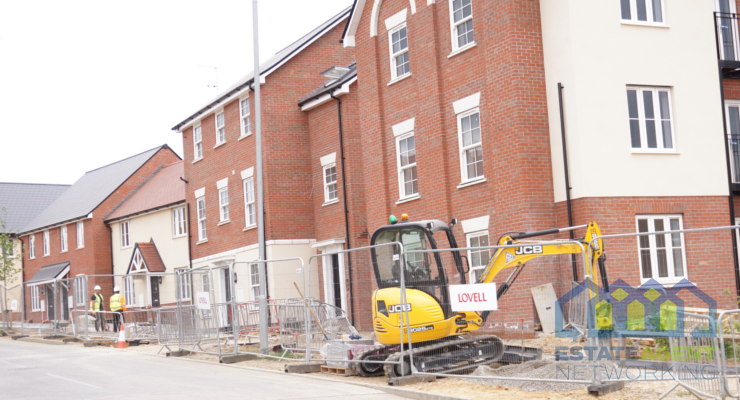Rightmove House Price Index – Subdued prices provide first-time buyer opportunity this autumn
- Average asking price of property coming to market rises by relatively muted 1.0% (+£3,184) this month, the lowest monthly rate of increase at this time of year since 2010
- Slowest sector is properties with two bedrooms or fewer with a 0.1% monthly price fall, a result of less active buy-to-let investor activity, giving first-time buyers an opportunity this autumn:
- These properties see largest year-on-year increase in average number of days to sell, up from 55 days to 58 days
- Mortgage approvals for new buy-to-let purchases down by 14% compared to a year ago and down by 53% compared to three years ago as more punitive tax regime has its desired effect*
- First-time buyers help to fill some of the gap left by lower buy-to-let activity with their year-on-year mortgage approvals up by 1%
Overview
It is traditional for the price of property coming to market to rise at this time of year, and while the monthly rise of 1.0% (+£3,184) does follow that pattern, it is the lowest seen in our October Index since 2010. The national average is dragged down by the 0.1% monthly price fall in the sector with properties of two bedrooms or fewer. This is the usual target market for both affordability-stretched first-time buyers and buy-to-let investors, but the latter are currently less active, giving an autumn opportunity for those looking to get on to the housing ladder.
Miles Shipside, Rightmove director and housing market analyst comments: “With the government using the tax system to try and help first-time buyers while deterring out-of-favour landlords, prices in this sector have been subdued as intended. That gives aspiring first-time buyers an autumn opportunity to negotiate a favourable deal. The story at this time of year for the last five years has been an average autumn bounce of 1.6% in the price of property coming to market. Whilst all regions have seen a monthly rise, this year has a more subdued narrative with only a 1% uplift as the script has more sub-plots to affect the mood. While the backdrop of political uncertainty and stretched buyer affordability remains the same, this month has price drops at the bottom of the market dragging down the national average.”
The annual rate of increase drops to 0.9%, the lowest annual rate since February 2012, which was the start of the price recovery that led to average new seller asking prices rising by over a third (33.9%) in less than seven years.
Shipside notes: “Stretched buyer affordability and a slowdown in price rises are the natural outcome of property prices increasing over the past seven years at a far faster pace than average wages. The prices of properties with two bedrooms or fewer have kept pace with the rest of the market with a 32.8% price uplift in that timescale, partly driven by buy-to-let investors seeking better and less risky returns than are available from other asset classes. Government policy has sought to reduce this activity through higher landlord stamp duty and lower income tax reliefs and so tilt the balance back towards first-time buyers. Help to Buy is also encouraging first-time buyers to buy brand new homes and may to an extent be redirecting them away from the second hand housing market.”
Properties with two bedrooms or fewer are typically the target market of buy-to-let investors, and where they compete with aspiring first-time buyers. Properties in this sector have seen the largest increase in the number of days to sell this month, taking 5% longer than the same month a year ago. While there have been increases in the time to sell in all sectors, this sector has seen the largest increase, up from an average of 55 days to 58 days. New buy-to-let mortgage approvals are down by 14% compared to a year ago and by 53% compared to three years ago as the more punitive tax regime has its desired effect.
Shipside observes: “Landlords are clearly buying far fewer properties and that leaves a gap in the market for first-time buyers. While landlords were hit with a 3% stamp duty surcharge on property purchases back in April 2016, in contrast most first-time buyers were effectively awarded stamp-duty-free status in November 2017. The fall in prices at the bottom of the market during what is a traditional busier time means that those keen to sell need to price accordingly, which gives an opportunity for those stamp-duty-free first-time buyers to negotiate harder. First-time buyer mortgage approvals are up, albeit by a marginal 1% year-on year, showing that some first-time buyers are helping to fill the gap in the market left by less competition from investors. More activity may follow if prices remain subdued, with stamp duty relief and falling prices helping their affordability. If the Chancellor’s budget later this month encourages more landlords to sell to long-term tenants for rumoured capital gains tax relief, then landlords who are looking to sell and renters who aspire to become first -time buyers could work together for their mutual benefit.”
Agent’s View
Robert Lazarus, MD of Sales at Paramount Properties in North West London, says: “There’s a better opportunity for first-time buyers coming in to the market at the minute compared to a couple of years ago, especially if they’re looking for a one bed flat. Before the additional stamp duty on second homes came in we were selling 20% of these flats to landlords which was driving prices up, and now we’re selling less than 5% of them to landlords, giving first-time buyers the first pick of new stock that comes on.”
*Mortgage approvals from UK Finance Mortgage Trends Update, July 2018.








